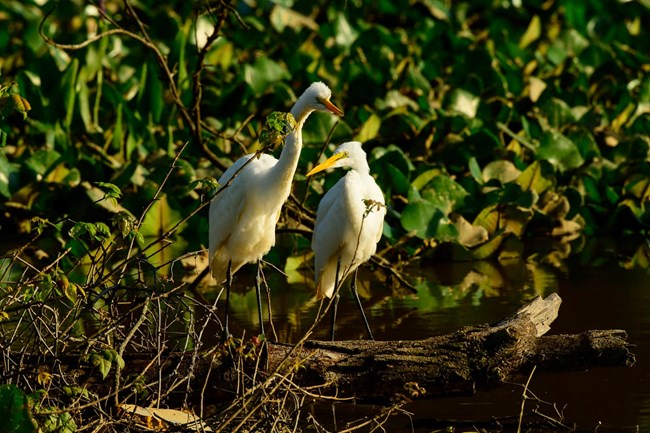
Tim Ervin The Great Egret is a wading species that benefits from the Anacostia watershed. They are in same family as the Great Blue Heron.Physical description: The Great Egret has all white feathers on its body. They have yellow beaks and black legs. They have a wingspan between 52-57in and weigh about 1000g. They have a slender neck and body that helps them capture prey in the water. Locality: The Great Egret’s ideal habitat is an aquatic one. Populations of Great Egrets live in both freshwater and brackish water. They are colonial nesters, so they will find other egrets to create a nesting community in the area. When they are not hunting prey on the banks of a body of water, they nest in the trees. This is a defense strategy against scavengers that would eat their eggs. The Great Egret has a wide range. They can live as far north as central Canada and as far south as Argentina. Depending on the cold season, some Great Egrets will migrate south for a warmer climate. Population status: The Great Egret has the status of "Least Concern" from the IUCN. There are about 200,000 individuals in North America, and over 2 million worldwide. They are a tree nesting species. Breeding season for this species begins in April and continues through September. Each season a female will lay 1-2 broods with up to 6 eggs each. Trophic Level / Diet: The Great Egret is one of the larger birds in this area. As adults, they are not predated often, but scavengers may steal eggs on occasion. They are secondary and often tertiary consumers in our marsh food web. They have a generalist diet and will eat fish, reptiles, and small invertebrates. 
Tim Ervin Scienfic Name: Ardea alba Kingdom: Animalia Phylum: Chordata Class: Aves Order: Pelecaniformes Family: Ardeidae Genus: Ardea Species: Ardea alba |
Last updated: February 26, 2023
